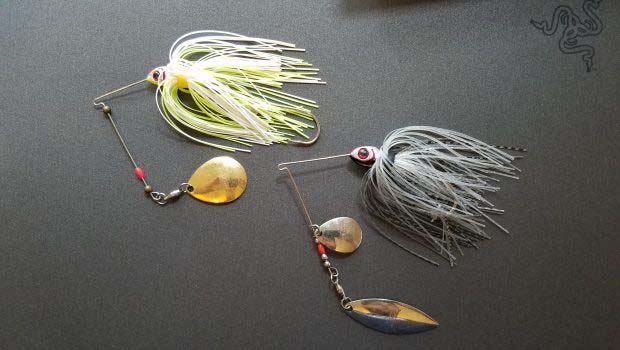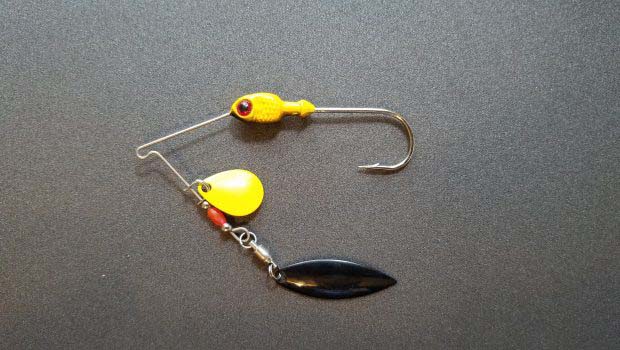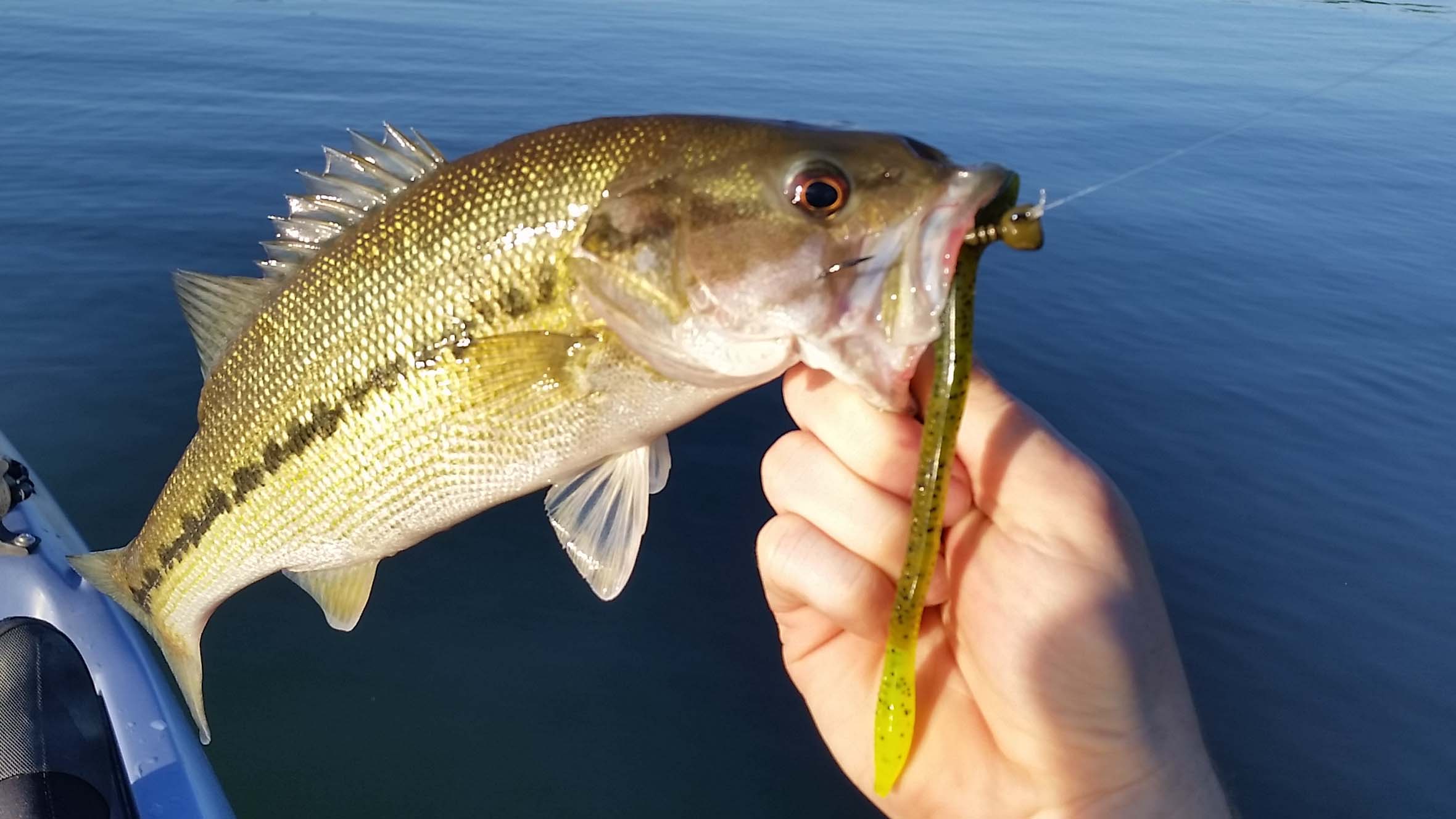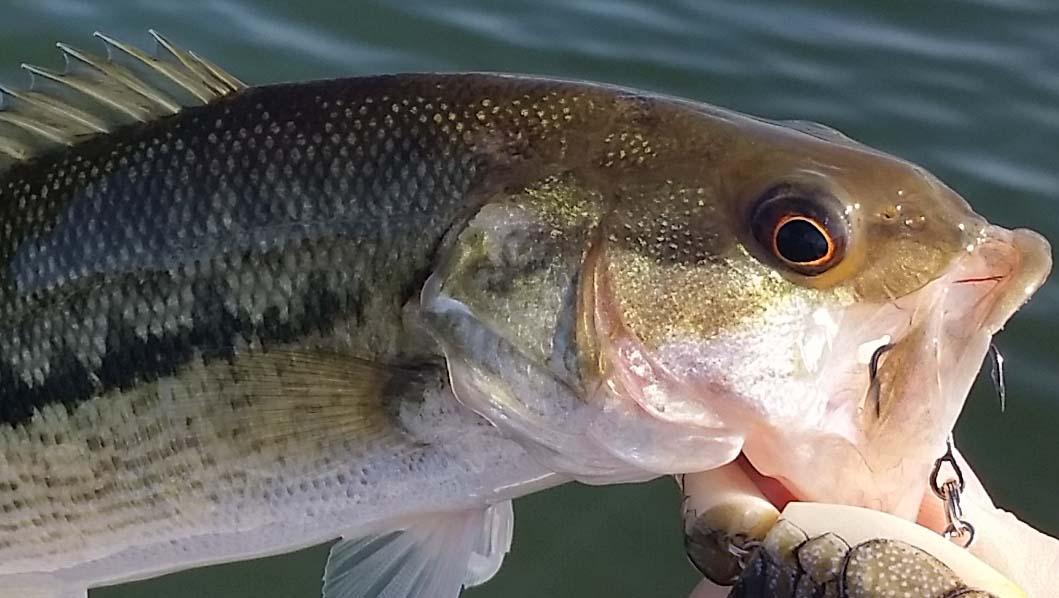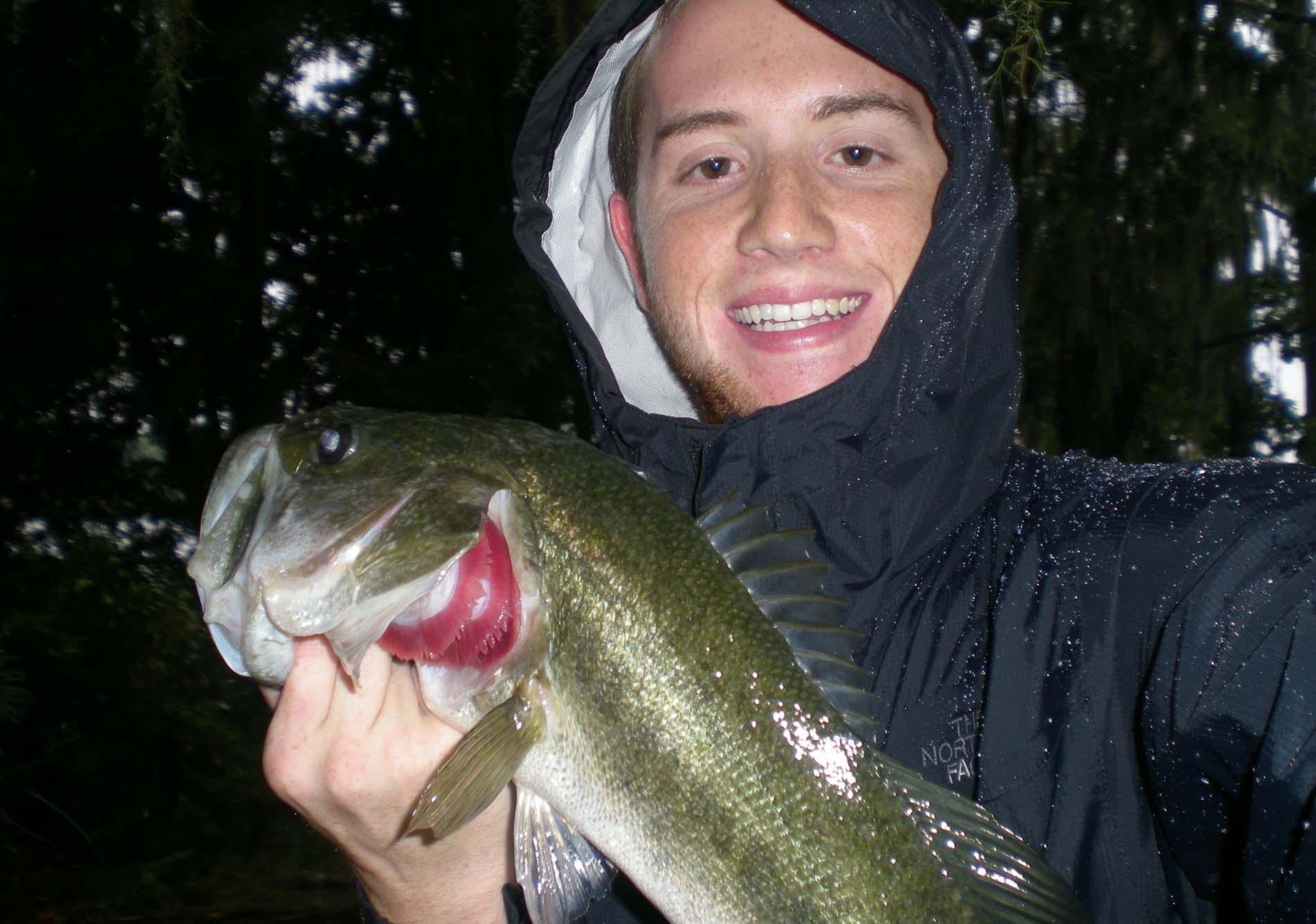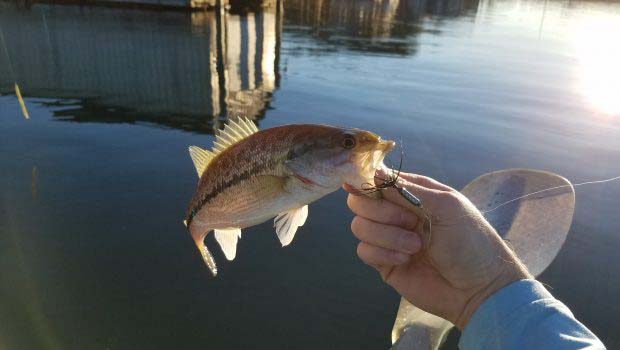
Bass Fishing with Spinnerbaits
Spinnerbaits are one of the most popular bass fishing lures and can be used year-round with many different forms of retrieval. They are effective when targeting all kinds of bass like largemouth or spotted bass. You can fish them in shallow cover on cloudy or windy days when topwater is not effective, however, they can also be good on bright calm days as well. Spinnerbaits have a smooth flowing motion and have single or multiple blades that cause flashes and vibrations in the water, and are generally fished at a medium to slow retrieve. Underhand casting is best to reduce the noise as the lure enters the water. A spinnerbait is definitely one of the most dynamic lures that can be used for bass fishing because of the many different ways it can be worked.
Designs
Safety Pin or Overhead Arm Spinner: The safety pin spinner is the most popular types of spinnerbait and generally fall into short arm and long arm categories. Short arm spinners are better for a vertical presentation of the lure because it falls better and more evenly. However it does not have much weed protection and you must be careful when bumping it off logs. Long arm spinners can have many blades creating more vibration, and is better for fishing horizontally around weedy areas. On the other hand, the long arm can prevent hook sets and they tend to nose dive when fished vertically. Check out the trailing hook on this one below to prevent short strikes.
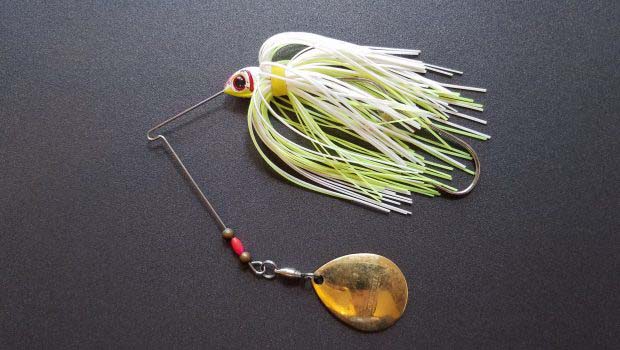
In-Line Spinner: In the in-line spinner the blade revolves around the central wire. A swivel is commonly used with this type of spinner to prevent the line from twisting. This is also called a rooster tail.

Blades
The main types of blades used on spinnerbaits are the Colorado, the Willowleaf, and the Indiana blade. The flash and vibration differences between the blades provide differences that make some blades better than others in different situations. Blades typically come in gold, silver, copper, white, or black, and the uses of these are dependent on different water conditions. Dark blades are used at night, copper blades are used in stained water, gold blades are used on cloudy days, and silver blades are used in clear water. When it comes down to it, all blades have enough vibration and flash to catch bass, and selecting different blades is more of a fine tuning process to fit what works best for you.
Willowleaf Blade: The blade has a long and thin profile that makes it good for fishing in vegetation and cover. Works best for bass in clear water because the blade provides a lot of flash from light reflection and has a relatively low amount of vibration.

Colorado Blade: A rounded spoon shaped blade designed to spin at a slow speed and creates maximum vibration in the water. Works best at a slow retrieve in water with low visibility or at night due to the emphasis on vibration rather than flash. Use during cold weather or early prespawn.

Indiana Blade: Tear shaped blade that combines features of both the Willowleaf blade and Colorado blade to provide both flash and vibration. Works best retireved fast in slightly stained or clear water and low light conditions. Best suited for warmer weather and active bass.

How to Fish a Spinnerbait?
- Chuck and Wind: The most common spinnerbait fishing technique, just cast it out and wind it back in at a moderate rate keeping it moving a few feet under the water. Works best as a searching technique for bass.
- Waking (Bulging): Reeling in the lure fast enough to keep it just below the surface and creating a bulge or wake on the surface of the water. The lure should not break the surface while doing this. Works best when bass are feeding on top.
- YoYo (Pumping): Using a slow roll retrieve periodically lift up your rod tip and then stop reeling and let the spinnerbait fall to the bottom. Repeat this every five or six winds on your reel.
- Slow Rolling: Cast the spinnerbait and start a slow and steady retrieve. Bump the lure into anything on the bottom, works best in deeper water or on ridges. A good technique for catching deep bass during the hot summers.
- Contact (Bumping): Cast out the lure and bring it back with a slow and steady retrieve bumping into anything you can on the way back in order to change the direction and provoke a strike.
- Buzzing: Work the lure on the top of the water as you would a buzzbait with the rod tip held high. Let the blades of the lure break the surface of the water to create noise.
- Ripping: Cast out the spinnerbait to deeper water and let it fall all the way to the bottom, then periodically rip it a few feet off the bottom giving it about eight cranks, then let it fall back to the ground. As soon as it hits the ground rip it up again. Keep this going during the whole retrieve. Works best for deeper bass near a ridge.
- Jigging: Basically work the lure as you would work a jig, pitch it and let it drop. Then pull it up and let it drop a few more times. Works great for grabbing bass in open grass beds if you pull it over the tips.
- Dragging: Cast the lure out and let it sink down to the bottom. Use a lift and drop action and keep tension on the line to keep the spinnerbait on the bottom the whole time.
Tips
- Always cast underhand to create minimal disturbance when your lure enters the water.
- Adding a red spot to the lead head of the spinnerbait will help simulate an injured baitfish.
- Almost always add a trailing hook or stinger if possible to catch short-striking bass.
- Adding a swivel between the line and the lure can help prevent line twisting.
- Let the lure bump into objects and change direction to induce a strike.
- Top colors in Florida tend to be white, yellow, black, and chartreuse.
- Post Tags:
- Bass
- Lures
- Spinnerbaits
Heath Anderson
Heath lives in North Carolina and has been an avid fisherman and all around outdoorsman for the past three decades. In addition to enjoying the outdoors, Heath has been active in the online fishing industry since 2010, teaching and sharing reviews of fishing products on BassGrab.com to help anglers catch more and look good while doing it.
All stories by: Heath Anderson


